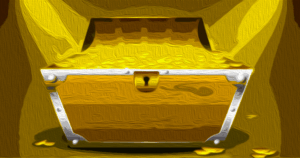
The Central Bank of Nigeria (CBN) has made a significant policy change by removing caps on naira payout rates for international money transfer operators (IMTOs). This move, announced on January 31, is part of the CBN's efforts to further liberalize the foreign exchange market.
Policy Adjustment for IMTOs
Prior to this policy adjustment, IMTOs were required to quote rates that did not exceed the previous day's exchange rate by more than 2.5%. However, with the new policy in place, IMTOs are now allowed to provide naira payout rates based on the prevailing exchange rate, superseding a CBN circular issued on September 13, 2023.
The decision to remove the caps comes as discussions about the stability and value of the naira in the official foreign exchange market continue. Nigerian commentators have noted that the previous caps were implemented as a precautionary measure to mitigate the risk of rapid naira depreciation. However, instead of achieving the desired effect of liberalizing the foreign exchange market, the caps led to an influx of dollars into the parallel market.
Widening Gap between Parallel and Official Rates
As a result of the caps, the gap between the naira's parallel market exchange rate and the official market exchange rate has widened. In late January, the naira reached a new low against the US dollar, and its value has continued to decline since then.
Positive Impact of Policy Shift
Nevertheless, there are reports indicating that the removal of the caps is already yielding positive results. On February 1, the naira experienced a more than 8% increase in value against the dollar. Analysts speculate that this surge may be directly linked to the central bank's decision to eliminate the allowable limit. Additionally, the naira's marginal recovery coincided with news that licensed foreign exchange dealers were planning to halt their operations.
Final Thoughts
The Central Bank of Nigeria's decision to remove caps on naira payout rates for IMTOs marks a significant policy adjustment in the country's foreign exchange market. This move is aimed at further liberalizing the market and addressing the widening gap between parallel and official exchange rates. As the effects of this policy change continue to unfold, it remains to be seen how it will impact the naira's stability and value in the long run.
Frequently Asked Questions
How Much of your IRA Should Be Made up of Precious Metals
You can protect yourself against inflation by investing your money in precious metals, such as silver and gold. It's not just a way to save money for retirement.
While silver and gold have seen significant increases in the last few years, they are still safe investments since they don’t fluctuate as often as stocks. These materials are in constant demand.
Silver and gold prices are typically predictable and stable. They tend to rise during economic growth and drop during recessions. This makes them great money-savers and long-term investments.
You should invest 10 percent of your total portfolio into precious metals. You can increase this percentage if you want further diversification.
What precious metals can you invest in for retirement?
Understanding what you have now saved and where you are currently saving money is the first step in retirement planning. If you don't know how much you currently have saved, start by taking an inventory of everything you own. You should list all savings accounts, stocks and bonds, mutual funds certificates of deposit (CDs), annuities, life insurance policies, annuities 401(k), real estate investments, and any other assets like precious metals. Add all these items together to calculate how much money you have for investment.
If you haven't already done so, you may want to consider opening a Roth IRA account if you're younger than 59 1/2 years old. Traditional IRAs allow you to deduct contributions out of your taxable income. Roth IRAs don't. However, you can't take tax deductions from future earnings.
You may need additional money if you decide you want more. Start with a regular brokerage.
Are precious-metal IRAs a good option?
How willing you are to risk your IRA account losing value will decide the answer. If you have $10,000 cash, they make sense as long as you don’t expect your IRA account to grow rapidly. These may not be the best option if you are looking to save for retirement over many decades and invest in assets that will increase in value (e.g. gold). They also involve fees which could eat into any gains.
What are the fees associated with an IRA for gold?
The average annual fee to open an individual retirement account (IRA), is $1,000. There are many types and types of IRAs. These include traditional, Roth or SEP-IRAs as well as SIMPLE IRAs. Each type of IRA has its own rules and requirements. If your investments are not tax-deferred, you might have to pay taxes on the earnings. You must also consider how long you want to hold onto the money. If you plan on holding onto your funds for longer, you'll likely save more money by opening a Traditional IRA rather than a Roth IRA.
A traditional IRA allows you to contribute up to $5,500 per year ($6,500 if you're 50 or older). A Roth IRA allows you to contribute unlimited amounts every year. The difference is that a traditional IRA allows you to withdraw your money without having to pay taxes. However, Roth IRA withdrawals are subject to tax.
Statistics
- The maximum yearly contribution to an individual's IRAs is currently $6,000 ($7,000 for those 50 years or older), or 100% of earned income, whichever is less. (monex.com)
- You can only purchase gold bars of at least 99.5% purity. (forbes.com)
- Silver must be 99.9% pure • (forbes.com)
- Same tax rules as traditional IRA SEP IRA contributions in 2022 are limited to 25% of compensation or $66,000, whichever is less Before setting up a Silver IRA, understand the fees and IRS restrictions. (sltrib.com)
External Links
en.wikipedia.org
forbes.com
- Gold IRA – Add Sparkle to Your Retirement Nest Egg
- Understanding China's Evergrande Crisis – Forbes Advisor
investopedia.com
kitco.com
How To
How to Open a Precious Metal IRA
Precious metals remain one of the most highly-valued investment options. Because they offer higher returns than traditional investments such as stocks and bonds, they are very popular. But, it is important to do your research and plan carefully before investing in precious metals. Here's how to open a precious-metal IRA account.
There are two main types for precious metal accounts: paper gold and Silver certificates (GSCs), and physical precious Metals accounts. Each type has advantages and drawbacks. GSCs offer easy access and trade, while physical precious metals accounts provide diversification benefits. You can read more about them below.
Physical precious metals accounts can be used to hold bullion, coins and bars. Although this option can provide diversification benefits, there are some drawbacks. For instance, the costs associated with buying, storing, and selling precious physical metals are quite expensive. Due to their size, it can be difficult for them to be transported from one place to another.
However, paper silver and gold certificates are relatively cheap. In addition, they're easily accessible and traded online. They are ideal for those who don't wish to invest in precious metals. They aren't as diverse as physical counterparts. Also, since they're backed by government agencies such as the U.S. Mint, the value of these assets could decrease if inflation rates rise.
Choose the best account for you financial situation when opening a precious metal IRA. Before you make that decision, here are some things to consider:
- Your tolerance level
- Your preferred asset allocation strategy
- What time do you have available to invest?
- Whether or not you plan on using the funds for short-term trading purposes
- What kind of tax treatment you'd prefer
- Which precious metal(s) you'd like to invest in
- How liquid can your portfolio have to be
- Your retirement age
- Where will you store your precious metals?
- Your income level
- Your current savings rates
- Your future goals
- Your net worth
- Any special circumstances that may affect your decision
- Your overall financial position
- Your preference between physical and paper assets
- Your willingness and ability to take risks
- Your ability manage losses
- Your budget constraints
- Your desire to become financially independent
- Your investment experience
- Your familiarity in precious metals
- Your knowledge of precious Metals
- Your confidence in the economy
- Your personal preferences
Once you have decided which type of precious-metal IRA is best for you, it's time to open an account at a reputable dealer. These companies are often found by word of mouth referrals or online research.
After opening your precious metal IRA you will need to decide how big you want it to be. There are different minimum deposits for precious metal IRA accounts. Some require only $100, while others will allow you to invest up to $50,000.
As stated above, the amount of money invested in your precious metal IRA is completely up to you. You should choose a higher initial deposit if you want to build wealth over time. If you are planning to invest small amounts each month, a lower initial investment might be better.
You can buy any type of investment, regardless of the amount of precious metals in your IRA. These are the most popular:
- Bullion bars and rounds of gold, as well as coins
- Silver – Rounds or coins
- Platinum – Coins
- Palladium – Bar and round forms
- Mercury – Round or bar forms
—————————————————————————————————————————————————————————————-
Based on [POSTTITLE]
by [POSTAUTHOR]
Related posts:
 Nigeria’s Plans to Include Fintechs in Broadened Official Currency Market
Nigeria’s Plans to Include Fintechs in Broadened Official Currency Market
 Report: Nigeria-China Currency Swap Agreement Fails to Ease Pressure on the Naira
Report: Nigeria-China Currency Swap Agreement Fails to Ease Pressure on the Naira
 Nigerian Central Bank Dismisses Rumors About Demonetized Naira Banknotes
Nigerian Central Bank Dismisses Rumors About Demonetized Naira Banknotes
 The Federal Reserve Maintains Current Rates, Eyes Potential Reductions in 2024
The Federal Reserve Maintains Current Rates, Eyes Potential Reductions in 2024













